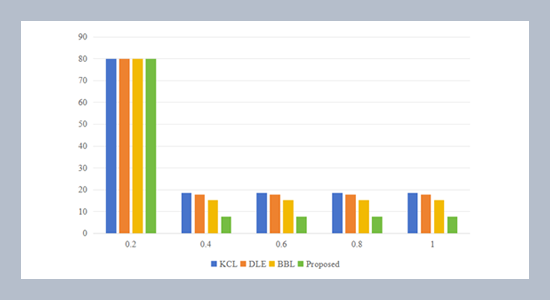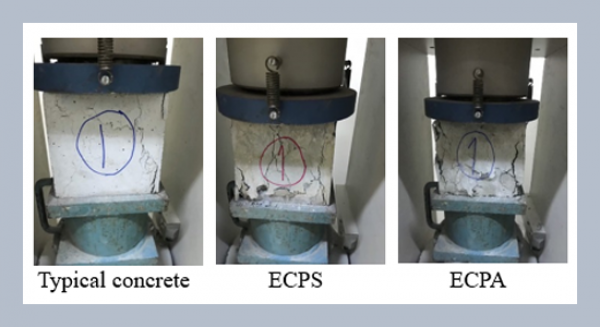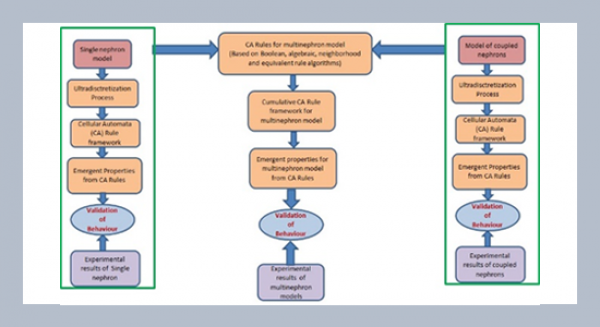REFERENCES
- Adnan, M., Kalra, S., Cresswell, J.C., Taylor, G.W., Tizhoosh, H.R. 2022. Federated learning and differential privacy for medical image analysis. Scientific Reports, 12, 1953.
- Bag, S., Gupta, S., Kumar, A., Sivarajah, U. 2021. An integrated artificial intelligence framework for knowledge creation and B2B marketing rational decision making for improving firm performance. Industrial Marketing Management, 92, 178–189.
- Birjali, M., Kasri, M., Beni-Hssane, A. 2021. A comprehensive survey on sentiment analysis: Approaches, challenges and trends. Knowledge-Based Systems, 226, 107134.
- Brauwers, G., Frasincar, F. 2023. A general survey on attention mechanisms in deep learning. IEEE Transactions on Knowledge and Data Engineering, 35, 3279–3298.
- Burdick, D., Calimlim, M., Flannick, J., Gehrke, J., Yiu, T. 2005. MAFIA: A maximal frequent itemset algorithm. IEEE transactions on knowledge and data engineering, 17, 1490–1504.
- Chen, R., Fung, M., Mohammed, N., Bipin, C., Wang, K. 2013. Privacy-preserving trajectory data publishing by local suppression. Information Sciences, 231, 83–97.
- Cretu, A., Houssiau, F., Cully, A., Montjoye, Y. 2022. QuerySnout: Automating the discovery of attribute inference attacks against query-based systems. In Proceedings of the 2022 ACM SIGSAC Conference on Computer and Communications Security, 623–637.
- Dhinakaran, D., Joe Prathap, P.M. 2022. Ensuring privacy of data and mined results of data possessor in collaborative ARM. In Pervasive Computing and Social Networking: Proceedings of ICPCSN, 431–444.
- Gopi, S., Lee, T., Liu, D. 2022. Private convex optimization via exponential mechanism. In Conference on Learning Theory. PMLR, 1948–1989.
- Guo, J., Cao, W., Nie, B., Qin, Q. 2023. Unsupervised learning composite network to reduce training cost of deep learning model for colorectal cancer diagnosis. IEEE Journal of Translational Engineering in Health and Medicine, 11, 54–59.
- Hamid, R.A., Albahri, A.S., Alwan, J.K., Al-Qaysi, Z.T., Albahri, O.S., Zaidan, A.A., Alnoor, A., Alamoodi, A.H., Zaidan, B.B. 2021. How smart is e-tourism? A systematic review of smart tourism recommendation system applying data management. Computer Science Review, 39, 100337.
- Hu, S., Gao, S., Wu, L., Xu, Y., Zhang, Z., Cui, H., Gong, X. 2021. Urban function classification at road segment level using taxi trajectory data: A graph convolutional neural network approach. Computers, Environment and Urban Systems, 87, 101619.
- Irazoqui, G., Inci, S., Eisenbarth, T., Sunar, B. 2014. Wait a minute! A fast, cross-VM attack on AES. In Research in Attacks, Intrusions and Defenses: 17th International Symposium, RAID 2014, Springer International Publishing, 299–319.
- Jacobs, G., Konrad, C., Berroth, J., Huang, M. 2022. Function-oriented model-based product development. Design Methodology for Future Products: Data Driven, Agile and Flexible, 243–263.
- Jagielski, M., Oprea, A., Biggio, B., Liu, C., Nita-Rotaru, C., Li, B. 2018. Manipulating machine learning: Poisoning attacks and countermeasures for regression learning. In 2018 IEEE Symposium on Security and Privacy (SP), 19–35.
- Jia, D., Yin, B., Huang, X. 2021. Association analysis of private information in distributed social networks based on big data. Wireless Communications and Mobile Computing, 2021, 1–12.
- Kerestes, C., Delafield, R., Elia, J., Chong, E., Kaneshiro, B., Soon, R. 2021. It was close enough, but it wasn't close enough: A qualitative exploration of the impact of direct-to-patient telemedicine abortion on access to abortion care. Contraception, 104, 67–72.
- Kesu, S., Ramasangu, H. 2023. Pressure flow dynamics in cellular automata based nephron network model. International Journal of Applied Science and Engineering, 20, 1–12.
- Lee, H., Choi, H., Byun, M., Chang, J. 2022. Multi-scale architecture and device-aware data-random-drop based fine-tuning method for acoustic scene classification. In Proceedings of the 7th Detection and Classification of Acoustic Scenes and Events 2022 Workshop (DCASE2022).
- Li, H., Li, Z., Li, K., Rellermeyer, J., Chen, L., Li, K. 2021. SGD_Tucker: A novel stochastic optimization strategy for parallel sparse tucker decomposition. IEEE Transactions on Parallel and Distributed Systems, 32, 1828–1841.
- Li, Q., Fu, Q., Zhu, J., Sun, Y., He, H., Hu, H. 2023. Endophytic bacteria in Ricinus communis L.: Diversity of bacterial community, plant− Growth promoting traits of the isolates and its effect on Cu and Cd speciation in soil. Agronomy, 13, 333.
- Li, X., Li, H., Zhu, H., Huang, M. 2019. The optimal upper bound of the number of queries for Laplace mechanism under differential privacy. Information Sciences, 503, 219–237.
- Liu, C., Zhang, Y. 2023. Advances and hotspots analysis of value stream mapping using bibliometrics. International Journal of Lean Six Sigma, 14, 190–208.
- Liu, Z., Jiang, D., Zhang, C., Zhao, H., Zhao, Q., Zhang, B. 2021. A novel fireworks algorithm for the protein-ligand docking on the autodock. Mobile Networks and Applications, 26, 657–668.
- Mahawaga, P., Bertok, P., Khalil, I., Liu, D., Camtepe, S., Atiquzzaman, M. 2022. Local differential privacy for deep learning. IEEE Internet of Things Journal, 7, 5827–5842.
- Meng, X., Wang, X., Yin, S., Li, H. 2023. Few-shot image classification algorithm based on attention mechanism and weight fusion. Journal of Engineering and Applied Science, 70.
- Nam, H., Lee, C. 2023. Random image frequency aggregation dropout in image classification for deep convolutional neural networks. Computer Vision and Image Understanding, 232, 103684.
- Ren, W., Ghazinour, K., Lian, X. 2023. kt-safety: Graph release via k-anonymity and t-closeness. IEEE Transactions on Knowledge and Data Engineering, 35, 9102–9113.
- Soria-Comas, J., Domingo-Ferrer, J., Sánchez, D., Martínez, S. 2014. Enhancing data utility in differential privacy via microaggregation-based k-anonymity. The VLDB Journal, 23, 771–794.
- Soria-Comas, J., Domingo-Ferrer, J., Sánchez, D., Martínez, S. 2015. t-closeness through microaggregation: Strict privacy with enhanced utility preservation. IEEE Transactions on Knowledge and Data Engineering, 27, 3098–3110.
- Soria-Comas, J., Domingo-Ferrer, J., Sánchez, D., Megías, D. 2017. Individual differential privacy: A utility-preserving formulation of differential privacy guarantees. IEEE Transactions on Information Forensics and Security, 12, 1418–1429.
- Tseng, C., Zhang, S. 2023. Heuristics for parallel machine scheduling with GoS eligibility constraints. International Journal of Applied Science and Engineering, 20, 1–12.
- Xiao, X., Wang, G., Gehrke, J. 2011. Differential privacy via wavelet transforms. IEEE Transactions on Knowledge and Data Engineering, 23, 1200–1214.
- Yin, C., Xi, J., Sun, R., Wang, J. 2018. Location privacy protection based on differential privacy strategy for big data in industrial internet of things. IEEE Transactions on Industrial Informatics, 14, 3628–3636.
- Yin, S., Li, H., Liu, D., Karim, S. 2020. Active contour modal based on density-oriented BIRCH clustering method for medical image segmentation. Multimedia Tools and Applications, 79, 31049–31068.
- Yin, S., Li, H., Laghari, A., Karim, S., Jumani, K. 2021. A bagging strategy-based kernel extreme learning machine for complex network intrusion detection. EAI Endorsed Transactions on Scalable Information Systems. 21, e8.
- Yu, Q., Yang, F., Xiao, Z., Gong, S., Sun, L., Chen, C. 2023. Trajectory personalization privacy preservation method based on multi-sensitivity attribute generalization and local suppression. Intelligent Data Analysis, 27, 935–957.
- Zhang, D., Shafiq, M., Wang, L., Srivastava, G., Yin, S. 2023. Privacy‐preserving remote sensing images recognition based on limited visual cryptography. CAAI Transactions on Intelligence Technology, 2023, 1–12.
- Zhang, K., Tian, J., Xiao, H., Zhao, Y., Zhao, W., Chen, J. 2022. A numerical splitting and adaptive privacy budget-allocation-based LDP mechanism for privacy preservation in blockchain-powered IoT. IEEE Internet of Things Journal, 10, 6733–6741.
- Zhao, Y., Chen, J. 2022. A survey on differential privacy for unstructured data content. ACM Computing Surveys (CSUR), 54, 1–28.
- Zheng, S., Ren, S., Wang, J., Wang, C., Wang, Y. 2022. Design of network big data anti attack system for carbon emission measurement based on deep learning. International Conference on Machine Learning for Cyber Security, 279–293.















